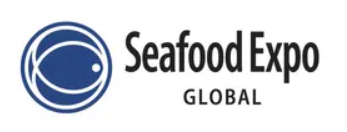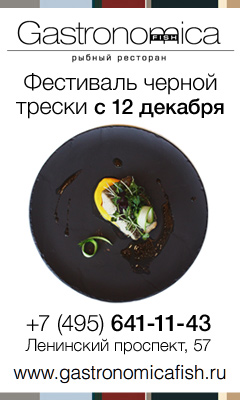Interview with Andrew Brown, representative of the Alaska Seafood Marketing Institute in Russia and Ukraine
Sfera Magazine
Years ago, Alaska was famous only for its gold mines, now this state is also known for the abundance of fish and seafood, which are exported to many countries around the world. Andrew Brown, a representative of Alaska Seafood Marketing Institute in Russia and Ukraine tells about Alaska Seafood.
Q.: Andrew, what is the main difference between Alaska fish and seafood and products that other countries supply?
A.: First of all, all these products are natural. Alaska fish and seafood grow in the wild. The diet of Alaska fish and seafood does not include artificial feed – that was forbidden by a state law in 1990.
In addition, the habitat of Alaska fish and seafood is thousands of kilometers from ecologically fragile areas, the Alaska water is one of the cleanest in the world.
Another advantage of Alaska seafood is high-quality catch. Alaska fishing industry meets all modern technical specifications. Fish and seafood are frozen almost immediately after the catch. Different species are caught in different seasons; and thanks to freezing, high-quality Alaska fish ans seafood are available to customers around the world all year round.
Alaska fish and seafood are famous for its unique taste, quality and color of the meat. The reason of that is their natural habitat and diet. If you are looking for a product that contains a lot of healthy omega-3 fatty acids, you should consider Alaska fish and seafood. Salmon migrates from a freshwater river to the ocean and then returns back to spawn, this trip may take thousands of kilometers. At the moment of catching the fish is very fit and contains a lot of omega-3 fatty acids.
Finally, Alaska is an ideal system of fisheries management, one of the main goals is to preserve natural resources for future generations. Harvest of fish and seafood here is strictly controlled. For example, in Alaska there is a law on anadromous fish species, according to which, any construction works near salmon streams and rivers must be pre-approved by Alaska Department of Fish and Game.
The system of fisheries in Alaska is well established and has been effectively operating for many years. Fisheries policy, regulations, and fishing quotas are determined by the State Board of Fisheries.
Q.: What is the volume of Alaska seafood export? Which countries are the key importers of Alaska seafood?
A.: In 2012 the total harvest in Alaska was approximately 2.5 million MT of fish and seafood. 51 % of the catch was pollock, 29% – salmon, 1% – black cod. About 40% of the catch was exported. In 2011, exports of fish and seafood from Alaska totaled 1,027,125.9 MT.
Key exports countries Asian countries: China, Japan and Korea. Also, a large amount of fish and seafood is exported to European countries.
A.: What are about volumes of fish and seafood that were exported from Alaska to Russia?
Q.: In 2011, Russia exported 9181 MT of fish and seafood; compared with 2010 an increase of exports was 29%. Mostly, it is Alaska pollock – 5009 MT , mainly in the form of surimi (3851 MT). Import of pollock in Russia is growing – pollock import increased by 172% in 2011 compared to 2010.
Also, green roe from Alaska is exported to Russia (2,026 MT in 2011).
Over the past few years, the consumption of black cod, a very rare fish in the premium segment, has increased. Black cod is primarily sold in HRI sector. From 2010 to 2011, exports of black cod from Alaska grew by 297% (311 MT).
Q.: What products are you actively developing in Russia now?
A.: In Russia, the Alaska Seafood Marketing Institute is mainly engaged in the development and promotion of premium fish segment, such as black cod and wild Alaskan salmon. Also, we promote salmon roe made from Alaska raw materials.
Q.: You have mentioned black cod. Tell us about that fish.
A.: Black cod live only in one region of the ocean, in addition, it has a distinctive rich flavor.
A.: What are the channels of the work in Russia?
Q.: Alaska fish is presented in each segment of the Russian fish market: pollock, sold in usual supermarkets, is a fish for a simple family dinner. In many supermarkets you can buy salmon roe, raw materials for which are imported from Alaska. In premium segment supermarkets such as “Azbuka Vkusa”, ” Globus Gourmet “, ” Gastronom № 1″ in GUM you can buy black cod from Alaska. Also, black cod is on the menu of many restaurants.
Q.: What are the prospects of working with Russia?
A.: Now in Russia we can see a very strong trend for a healthy lifestyle and diet, especially it is seen in big cities. Due to the fact that Alaska fish and seafood grow in the wild in ecologically pure environment and have a lot of healthy benefits, they fit perfectly into the concept of healthy nutrition.
More and more people begin to appreciate wild fish compared to farmed fish, in particular, this concerns salmon. More restaurants introduce black cod in their menu. And red caviar is also a popular product on the Russian market.
So the prospects for Alaska seafood in the Russian market are quite positive.
Source: www.sfera.fm
 Seafood Expo Global
Seafood Expo Global


